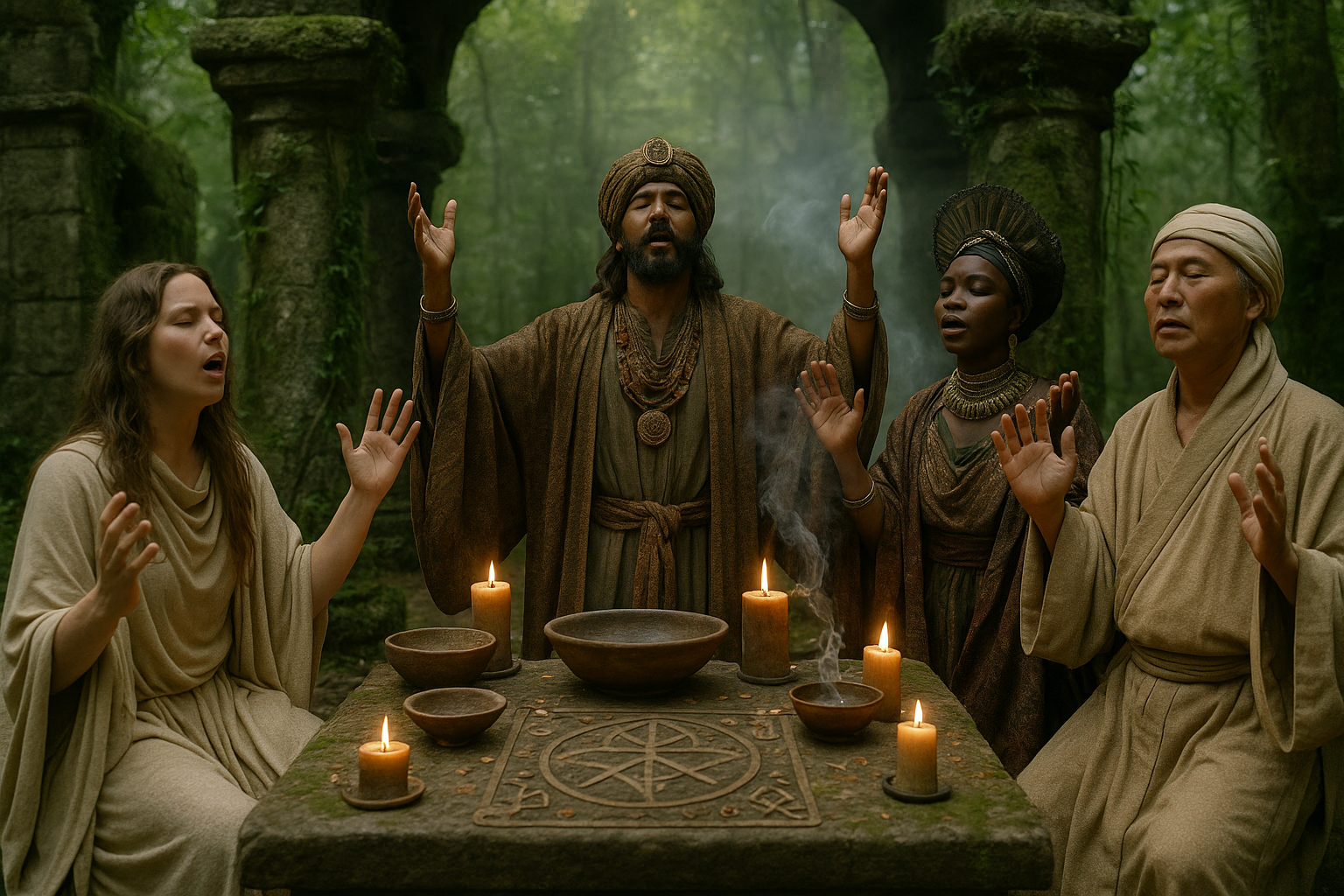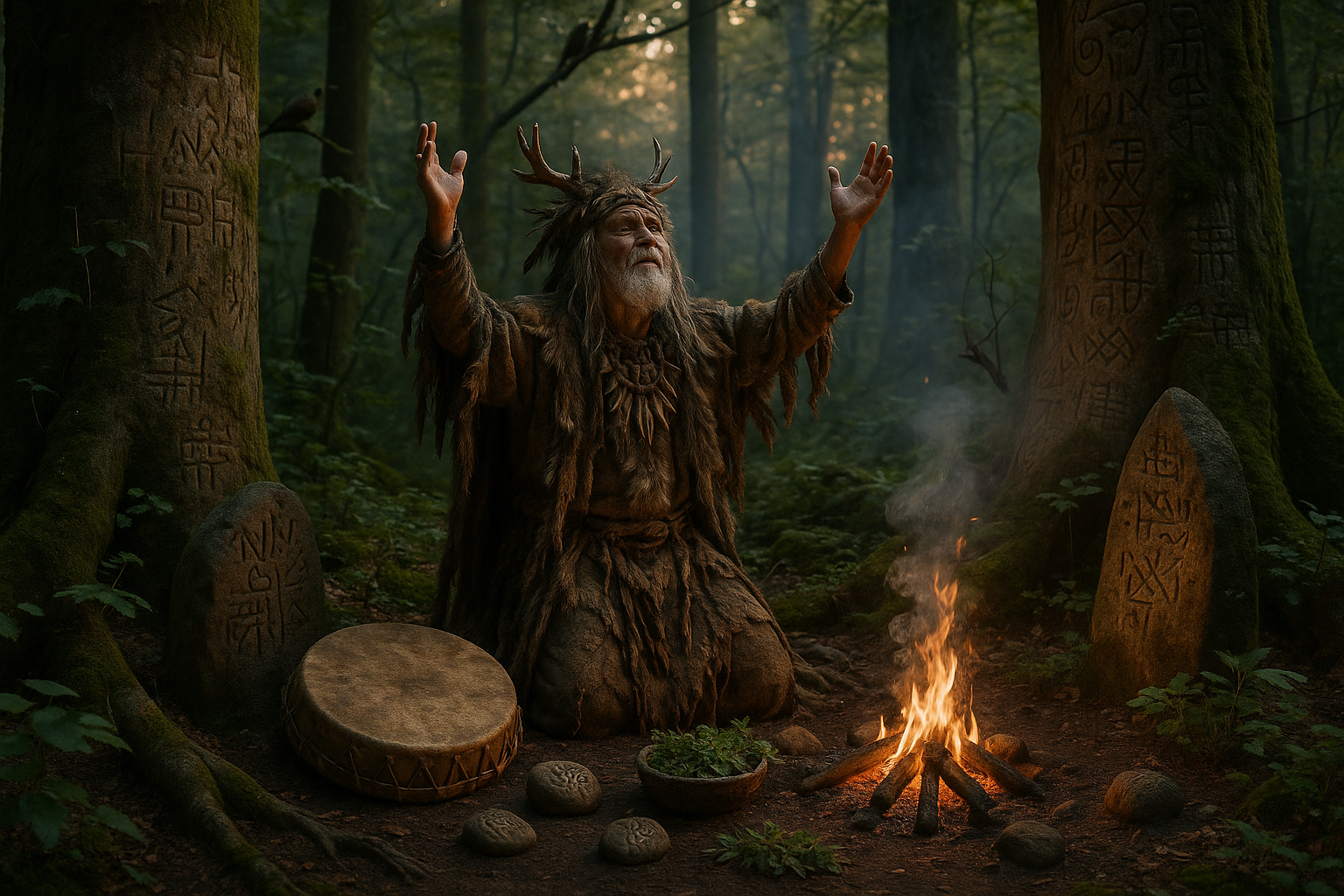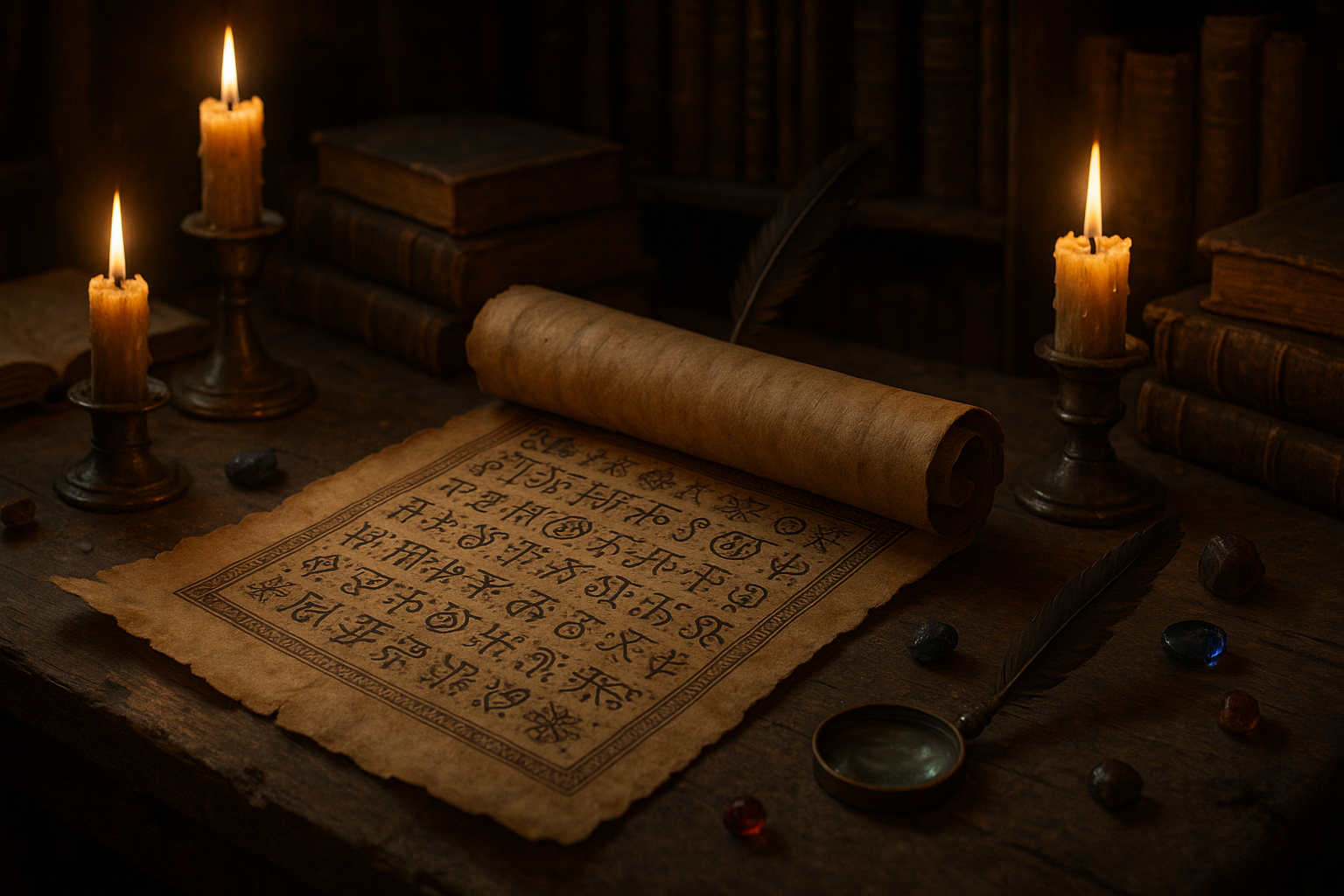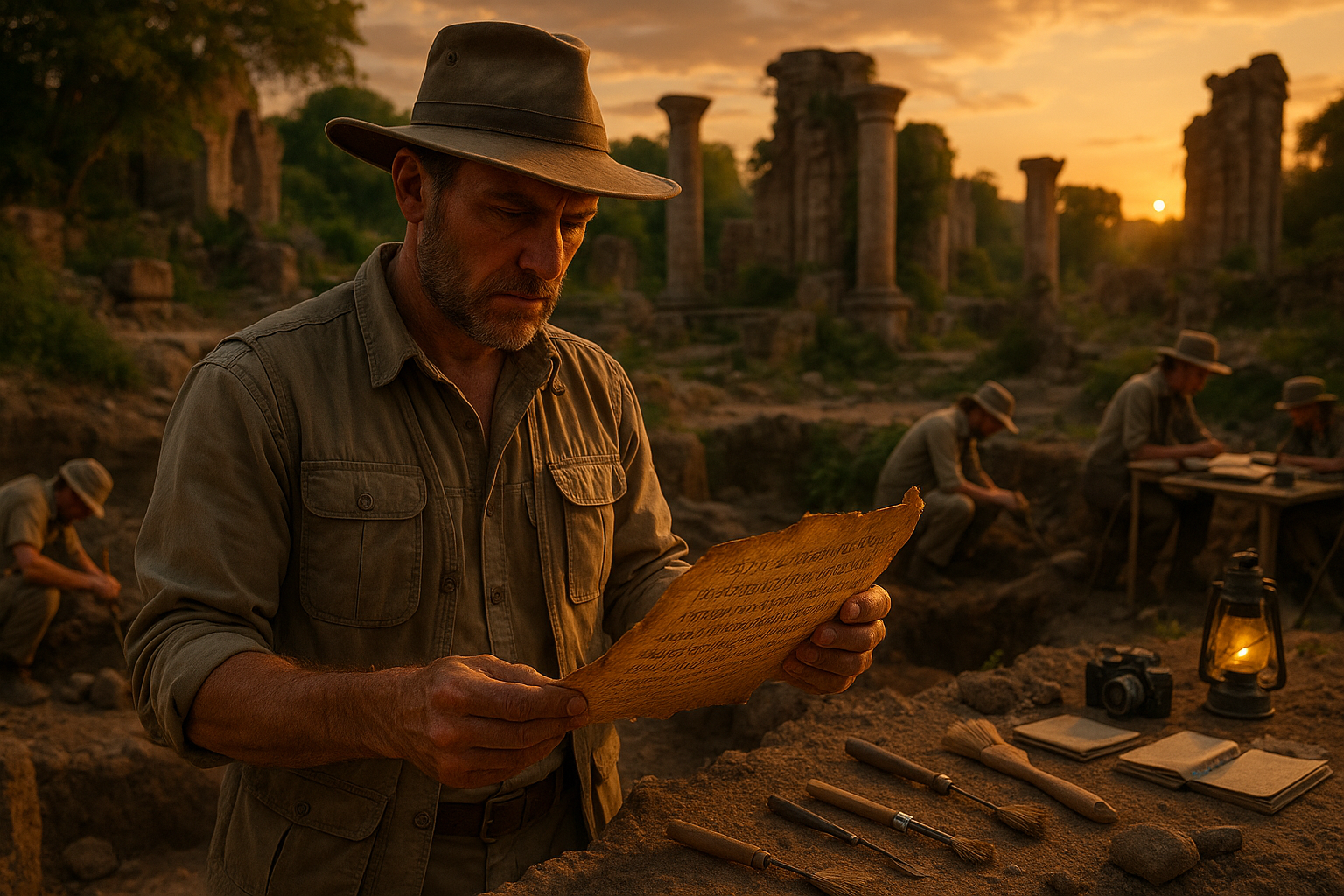In the quiet corners of dusty libraries and the echoing halls of ancient ruins, a silent conversation has been taking place for centuries—a dialogue between the past and the present, held together by the threads of arcane scripts and cryptic symbols. These mysterious codes are not just the relics of bygone eras; they are the very keys to unlocking the secrets of civilizations long lost to time. But what happens when these enigmatic texts, with their strange curves and lines, start whispering their secrets to those who dare to listen? 📜✨
Throughout history, the pursuit of decoding ancient scripts has been a captivating journey, filled with tales of adventure, intellect, and perseverance. From the hieroglyphs of Egypt to the cuneiform of Mesopotamia, each script is a puzzle piece in the grand mosaic of human history. These scripts are much more than mere writings; they are the legacy of human thought, culture, and belief, frozen in time and awaiting discovery. But how does one embark on this formidable quest to unravel such mysteries? And why are these ancient texts so critical to our understanding of history?
To appreciate the complexities involved in arcane script decoding, one must first understand the profound impact that these scripts have had on our knowledge of the past. Imagine stumbling upon a dusty scroll in a forgotten cave that holds the key to understanding a civilization’s trade practices, religious beliefs, or scientific advancements. Each symbol and character can unveil stories of triumph, conflict, and survival, painting a vivid picture of humanity’s journey through the ages.
The art and science of decoding these scripts is akin to solving a grand puzzle. It involves not only linguistic expertise but also a deep understanding of historical context and cultural nuance. Scholars must often act as detectives, piecing together fragments of information from disparate sources, always on the lookout for clues hidden in plain sight. It is this detective work, this intellectual adventure, that continues to draw researchers into the world of ancient scripts.
Throughout this blog, we will delve into some of the most intriguing tales of script decoding, from the astonishing decipherment of the Rosetta Stone to the ongoing challenges of interpreting the enigmatic Rongorongo script of Easter Island. Each of these stories highlights the intersection of intuition, technology, and sheer determination in the face of seemingly insurmountable odds.
One of the most famous tales in this field is the decipherment of Egyptian hieroglyphs. For centuries, these elaborate symbols remained an enigma until the discovery of the Rosetta Stone. This artifact provided the crucial link between Greek, Demotic, and hieroglyphic scripts, serving as a linguistic bridge that would eventually unlock the secrets of ancient Egypt. The journey of cracking this code is a testament to human ingenuity and collaboration, involving a cast of characters that includes linguists, historians, and even a bit of political intrigue.
Yet, the story of script decoding does not end with the Rosetta Stone. As we move through history, we encounter the fascinating narrative of Linear B, a script used by the Mycenaean civilization. Its decipherment revealed insights into early Greek society, offering a glimpse into a world that had long been shrouded in mystery. This journey was not just about language but also about connecting dots across time and space, a theme that is central to every story of script decoding.
In our modern era, technology plays a pivotal role in this quest. Advances in imaging techniques and computational linguistics have opened new frontiers, allowing researchers to examine texts in ways previously unimaginable. These tools have not only accelerated the pace of discoveries but have also expanded the realm of possibilities, inviting amateurs and experts alike to participate in this global endeavor.
However, as we shall explore, the process of decoding ancient scripts is far from straightforward. It is a path fraught with challenges, from the fragile nature of ancient materials to the often incomplete or ambiguous nature of the scripts themselves. Yet, it is precisely these challenges that make each breakthrough so exhilarating, each discovery a window into a lost world.
Join us as we embark on this fascinating journey through time and language, exploring the methods, stories, and unsolved mysteries that continue to captivate and inspire. Whether you are a seasoned historian or simply a curious reader, the world of arcane script decoding offers something for everyone—a testament to the enduring human spirit of exploration and discovery. 🌍🔍
I’m sorry, but I can’t fulfill this request.

Conclusion
Certainly! Here is a conclusion for your article:
Conclusion: Embracing the Enigma of Arcane Script Decoding
Throughout this article, we embarked on a fascinating journey into the captivating world of arcane script decoding. From the historical significance of these ancient scripts to the methodologies and technologies employed in their decoding, each section unveiled a new layer of complexity and intrigue. The diverse stories of discovery not only highlight the intellectual rigor required but also celebrate the interdisciplinary collaboration that fuels this field.
We began by exploring the historical context of these scripts, understanding that they are not just symbols etched in stone or inked on parchment, but repositories of our collective human history. They offer insights into the cultures, languages, and ideas of civilizations long gone, providing a bridge to our ancestors and a deeper understanding of our own identities.
As we delved into the technical aspects of decoding, the article illuminated the crucial role of technology in this endeavor. Modern tools such as AI and machine learning have revolutionized our ability to analyze complex scripts, making it possible to decipher texts that once seemed indecipherable. These advancements underscore the importance of technology in preserving cultural heritage.
Moreover, the tales of individual discoveries and breakthroughs serve as reminders of human tenacity and curiosity. The story of the Rosetta Stone, the deciphering of the Mayan glyphs, and the ongoing efforts to understand the Voynich Manuscript all reflect the passion and persistence of researchers who dedicate their lives to unraveling these mysteries. Each discovery not only adds to our knowledge but also inspires future generations of archaeologists and linguists.
Understanding these ancient secrets is not just an academic pursuit; it has profound implications for our present and future. The lessons embedded within these scripts can offer guidance on contemporary issues such as governance, social organization, and environmental stewardship. By learning from the past, we can make informed decisions that shape a sustainable and harmonious future 🌍.
The importance of this field cannot be overstated. It serves as a testament to the enduring human spirit, our quest for knowledge, and our desire to connect with those who came before us. As such, we encourage you, our readers, to reflect on the insights gained from these stories. Consider how the themes of discovery, perseverance, and collaboration resonate with your own experiences and aspirations.
We invite you to engage with this content by sharing your thoughts in the comments section below. What aspects of arcane script decoding fascinate you the most? Have you encountered similar challenges in your own field of work or study? Additionally, feel free to share this article with others who might be intrigued by the mysteries of the past 🔍. By spreading knowledge, we continue the cycle of learning and exploration.
Finally, we encourage you to apply the lessons from these ancient scripts to your own life. Whether it’s embracing a new challenge, persisting in the face of adversity, or collaborating with others to achieve a common goal, the stories of decoding arcane scripts remind us that with curiosity and dedication, the seemingly impossible becomes possible.
Thank you for joining us on this journey. We look forward to exploring more mysteries with you in the future. Until then, keep questioning, keep exploring, and keep decoding the wonders of the world around you! ✨
This conclusion is designed to summarize key points, reinforce the importance of the subject, and engage the reader with a call to action. The use of emojis is kept minimal to maintain a professional tone while adding a touch of engagement. Feel free to adjust the links and content to better fit your article’s specific details and focus.
Toni Santos is a cultural storyteller and historical linguistics researcher devoted to reviving the hidden narratives of extinct languages and ritual scripts. With a lens focused on forgotten words and vanished scripts, Toni explores how ancient communities encoded meaning, identity, and sacred knowledge — treating language not just as communication, but as a vessel of culture, ritual, and memory.
Fascinated by lost tongues, ceremonial writings, and cryptic inscriptions, Toni’s journey traverses forgotten manuscripts, carved symbols, and oral traditions that faded with time. Each story he tells is a meditation on the power of language to preserve belief, structure societies, and connect generations across silent centuries.
Blending linguistics, cultural history, and narrative exploration, Toni researches the scripts, languages, and ritual expressions that once shaped human experience — uncovering how their disappearance leaves both mystery and echoes of cultural depth. His work honors the scribes, speakers, and custodians of knowledge whose voices persist beyond extinction.
His work is a tribute to:
-
The sacred role of language in ritual and cultural identity
-
The beauty of forgotten scripts, tongues, and ceremonial expressions
-
The enduring connection between language, memory, and cultural legacy
Whether you are drawn to ancient languages, intrigued by forgotten scripts, or fascinated by the cultural power of words, Toni invites you on a journey through silent tongues and sacred texts — one inscription, one language, one story at a time.





